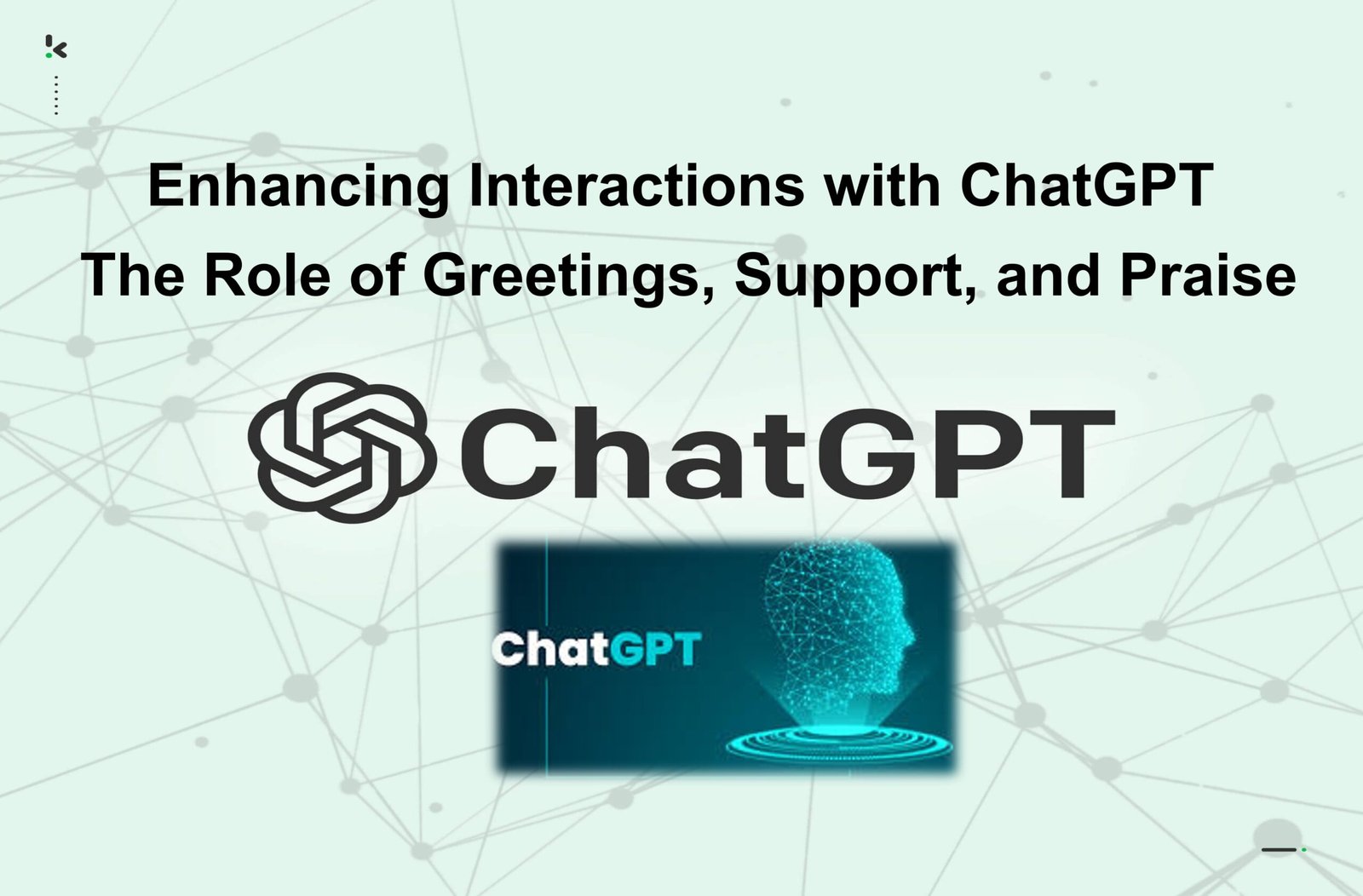

In an increasingly complex world, we yearn for deeper connections, meaningful relationships, and the power to make a positive impact.
Enter ChatGPT, a revolutionary technology poised to elevate human interactions to new heights. By incorporating warm greetings, supportive language, and genuine praise, ChatGPT can foster a level of understanding and empathy that has never been possible before.
Imagine a world where everyone feels welcomed and valued, where voices are heard, and contributions are cherished. A world brimming with collaboration, creativity, and a collective drive to shape a brighter future.
With ChatGPT, we can begin to build that world.
Let’s embark on a journey to uncover the transformative power of ChatGPT in human interactions.
Main Content



When interacting with ChatGPT, the structure of your prompts can significantly influence the quality and tone of the responses. Understanding whether to include elements such as greetings, supportive language, or praise can help in creating a more engaging and productive dialogue. Here’s a detailed exploration of these elements:
1- Incorporating Greetings
A friendly greeting is an ideal way to start any interaction. It creates a welcoming and comfortable atmosphere and sets a positive tone for the conversation.
Benefits of incorporating greetings:
Examples:
– With Greeting:
– User: “Hi ChatGPT, can you help me understand the basics of quantum computing?”
– ChatGPT: “Hello! Of course, I’d be happy to help you with the basics of quantum computing. Quantum computing is a type of computation that”
– Without Greeting:
– User: “Explain quantum computing.”
– ChatGPT: “Quantum computing is a type of computation that”
In the example with a greeting, the response is more engaging and polite, making the interaction feel more like a conversation.
2- Using Supportive Language
Supportive language is an essential element in building positive relationships with users. It shows that ChatGPT cares about helping them and values their efforts.
Benefits of using supportive language:
Examples:
– With Supportive Language:
– User: “I’m really excited to learn about machine learning. Could you explain how neural networks work?”
– ChatGPT: “I’m glad to hear that you’re excited about learning machine learning! Neural networks are a series of algorithms that attempt to recognize underlying relationships in a set of data through a process that mimics the way the human brain operates…”
– Without Supportive Language:
– User: “Explain neural networks.”
– ChatGPT: “Neural networks are a series of algorithms that attempt to recognize underlying relationships in a set of data through a process that mimics the way the human brain operates”
The use of supportive language in the first example leads to a more enthusiastic and encouraging response from ChatGPT.
3- Offering Praise or Appreciation
Praise and appreciation are effective ways to reinforce positive behavior and motivate users.
Benefits of offering praise or appreciation:
Examples:
– With Praise:
– User: “Thank you for your help so far! Could you also tell me about the applications of blockchain technology?”
– ChatGPT: “You’re welcome! I’m glad to help. Blockchain technology has a wide range of applications, including cryptocurrencies, supply chain management, healthcare, and more. For instance, in cryptocurrencies, blockchain serves as the decentralized ledger that records all transactions…”
– Without Praise:
– User: “Tell me about the applications of blockchain technology.”
– ChatGPT: “Blockchain technology has a wide range of applications, including cryptocurrencies, supply chain management, healthcare, and more. For instance, in cryptocurrencies, blockchain serves as the decentralized ledger that records all transactions”
The first example, which includes praise, results in a response that is more engaging and polite.
4- Practical Applications and Considerations
When crafting prompts, incorporating greetings, supportive language, and praise can make the interaction more natural and enjoyable. However, the necessity and effectiveness of these elements can vary depending on the context and purpose of the interaction.
These techniques can be applied in a variety of interactions, such as:
Context Matters:
– Casual Conversations: In more casual or exploratory conversations, greetings and supportive language can significantly enhance the interaction.
– Example: “Hey ChatGPT, I’m curious about the history of the Internet. Can you tell me more about it?”
– Professional or Direct Queries: For professional or urgent queries, a more direct approach might be preferable.
– Example: “Outline the main features of Python programming language.”
Important considerations:
In conclusion, the techniques of incorporating greetings, using supportive language, and offering praise are effective tools for enhancing positive interactions with users.
Note: These are just examples, and they can be adapted and expanded to suit your specific needs.
Conclusion
Incorporating greetings, supportive language, and praise in your interactions with ChatGPT can lead to more engaging and productive dialogues. These elements help in setting a positive tone, encouraging detailed responses, and building a pleasant interaction loop. However, the context and purpose of the interaction should guide the inclusion of these elements. By understanding and leveraging these nuances, users can optimize their interactions with ChatGPT to achieve more effective and enjoyable outcomes.